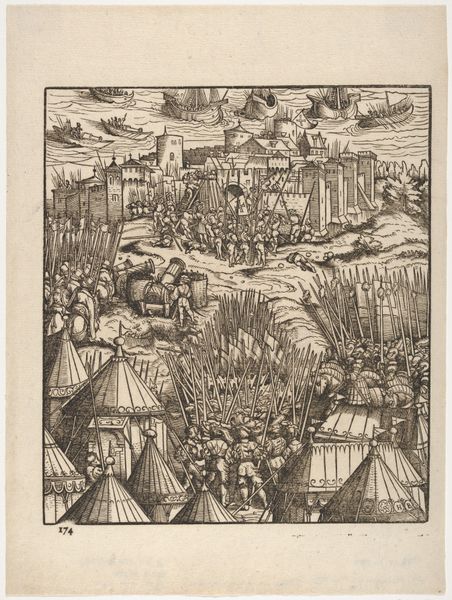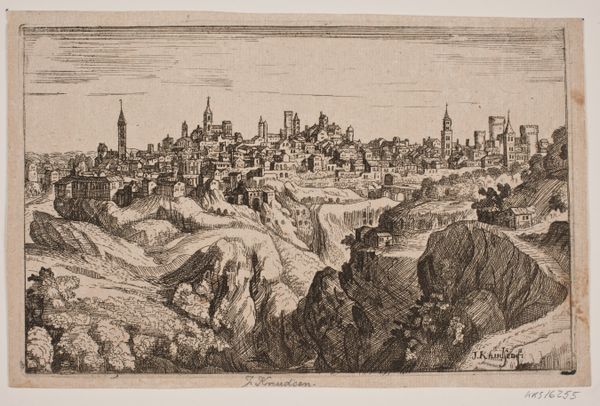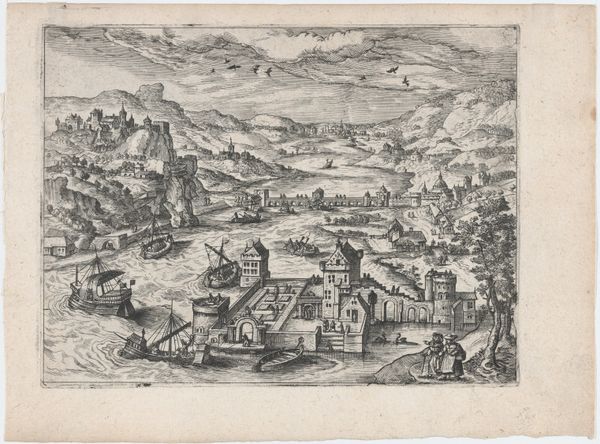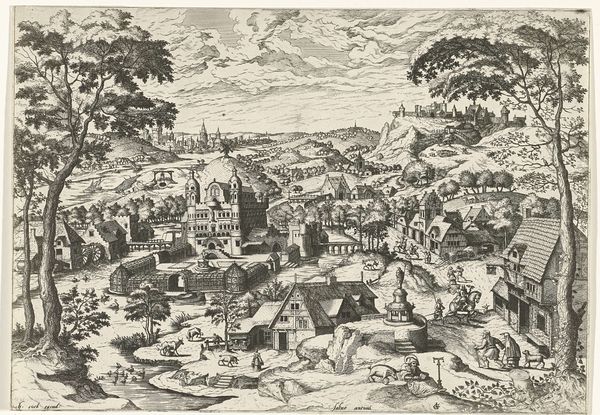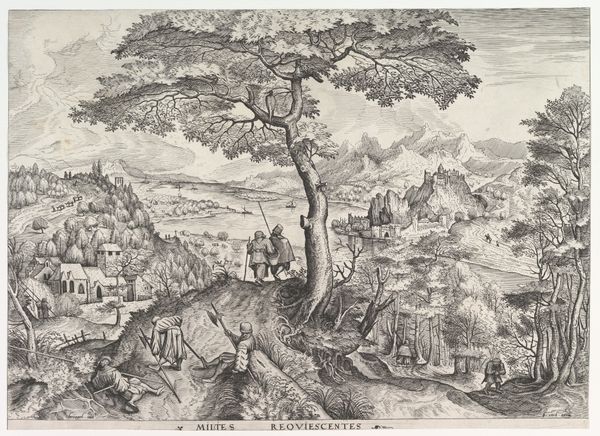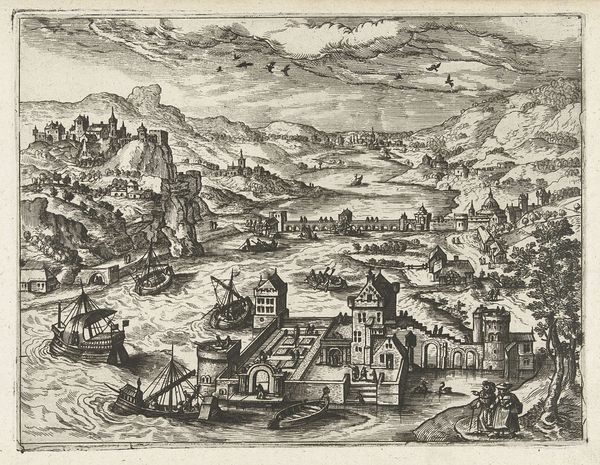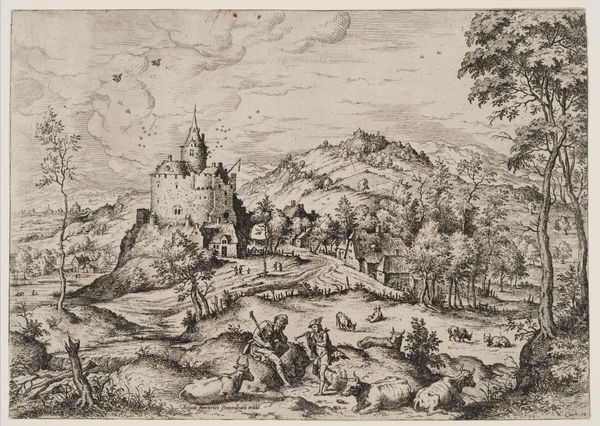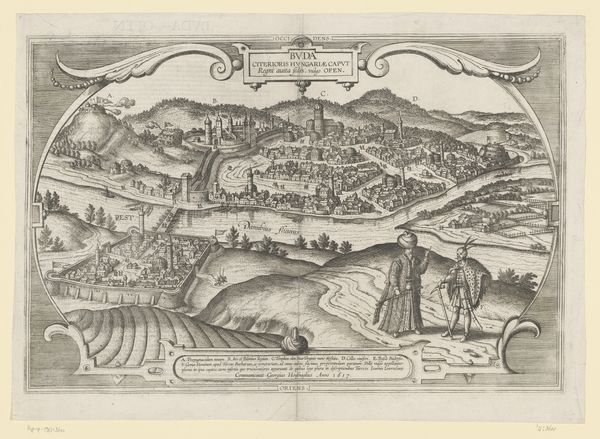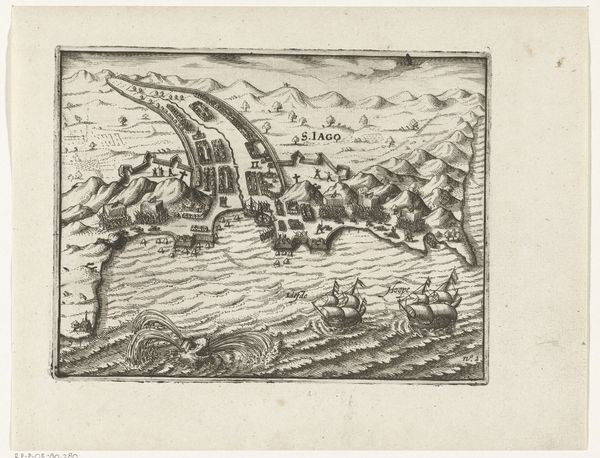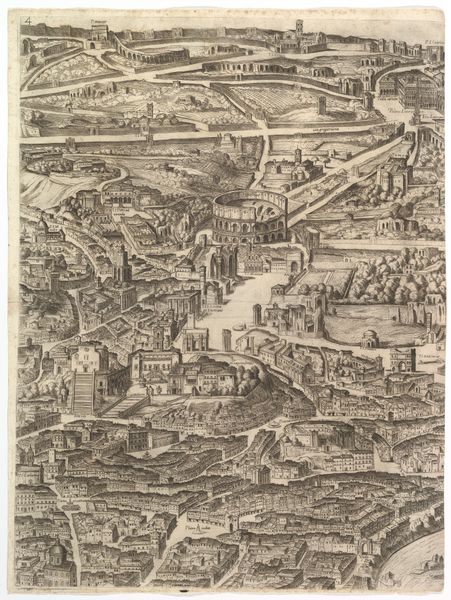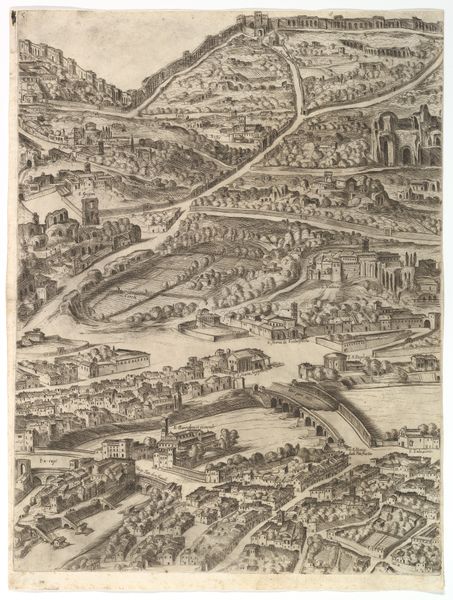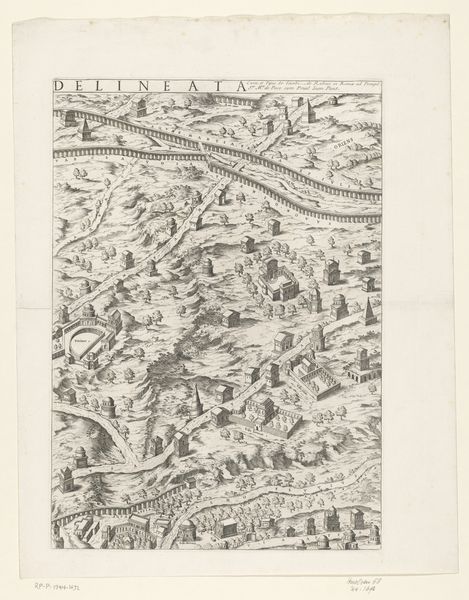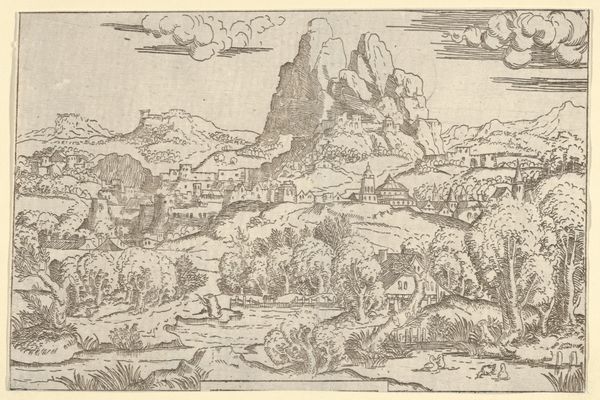
The Conquest of Gradisca, from Der Weisskunig 1775 - 1800
0:00
0:00
Dimensions: Sheet: 8 13/16 × 7 3/4 in. (22.4 × 19.7 cm)
Copyright: Public Domain
Editor: This intricate woodcut is "The Conquest of Gradisca" from *Der Weisskunig*, dating from around 1775-1800 by Hans Burgkmair, currently residing at The Met. It's overwhelming to take in all the visual information! The scene is dominated by conflict, and yet there’s a remarkable calmness to the landscape in the background. How do you interpret this work, seeing as its a history painting and its narrative potential? Curator: That tension between violence and tranquility is key. Think of Burgkmair operating within a specific social and political context. The print presents a carefully constructed image of power and dominion, a visual language designed to legitimize authority. What elements contribute to this sense of power? Editor: The cannons, for sure. And the sheer number of soldiers. Their order suggests the strength of a military force. Is the scene glorifying violence, or trying to communicate something else? Curator: It's not simply about glorifying violence. Remember that the commission comes from a very particular patron seeking an elevation of the importance of the family’s military and leadership lineage. Ask yourself who this print was intended for, how it circulated, and what impact it had on the audiences of the time. It functioned as propaganda. Can you identify any symbols or visual cues within the image that suggest the ideals of early imperialist culture? Editor: The detailed rendering of each soldier, maybe. Even within the chaotic scene, each is given detail to highlight the power of the army. Curator: Exactly! Consider how museums themselves played a part in reinforcing cultural narratives around power. The presentation and framing of historical events have evolved considerably. Museums in the 18th and 19th century actively contributed to nationalist discourses. Do you think museums now still have the power to perpetuate social hierarchies? Editor: I suppose even in striving for objectivity, they still make choices about what to show and how to show it, affecting interpretation. Curator: Precisely. Thinking about the image as more than just a depiction of conflict, but instead of it as a projection of power is important to see what visual cues were deliberately shown to communicate a political position. Editor: That perspective really shifted how I viewed the artwork. Seeing the work with intention brings clarity to its true historical context.
Comments
No comments
Be the first to comment and join the conversation on the ultimate creative platform.
